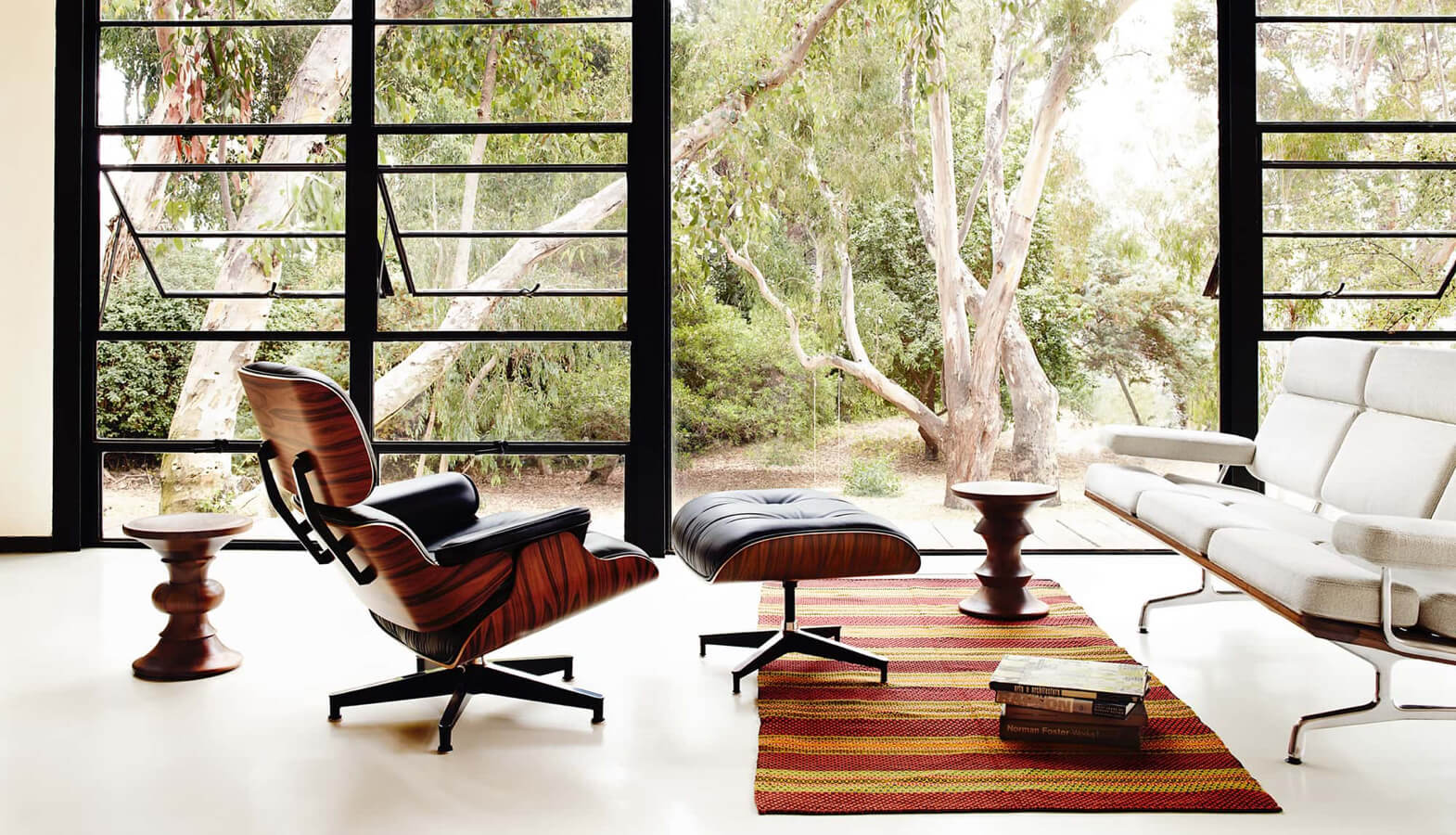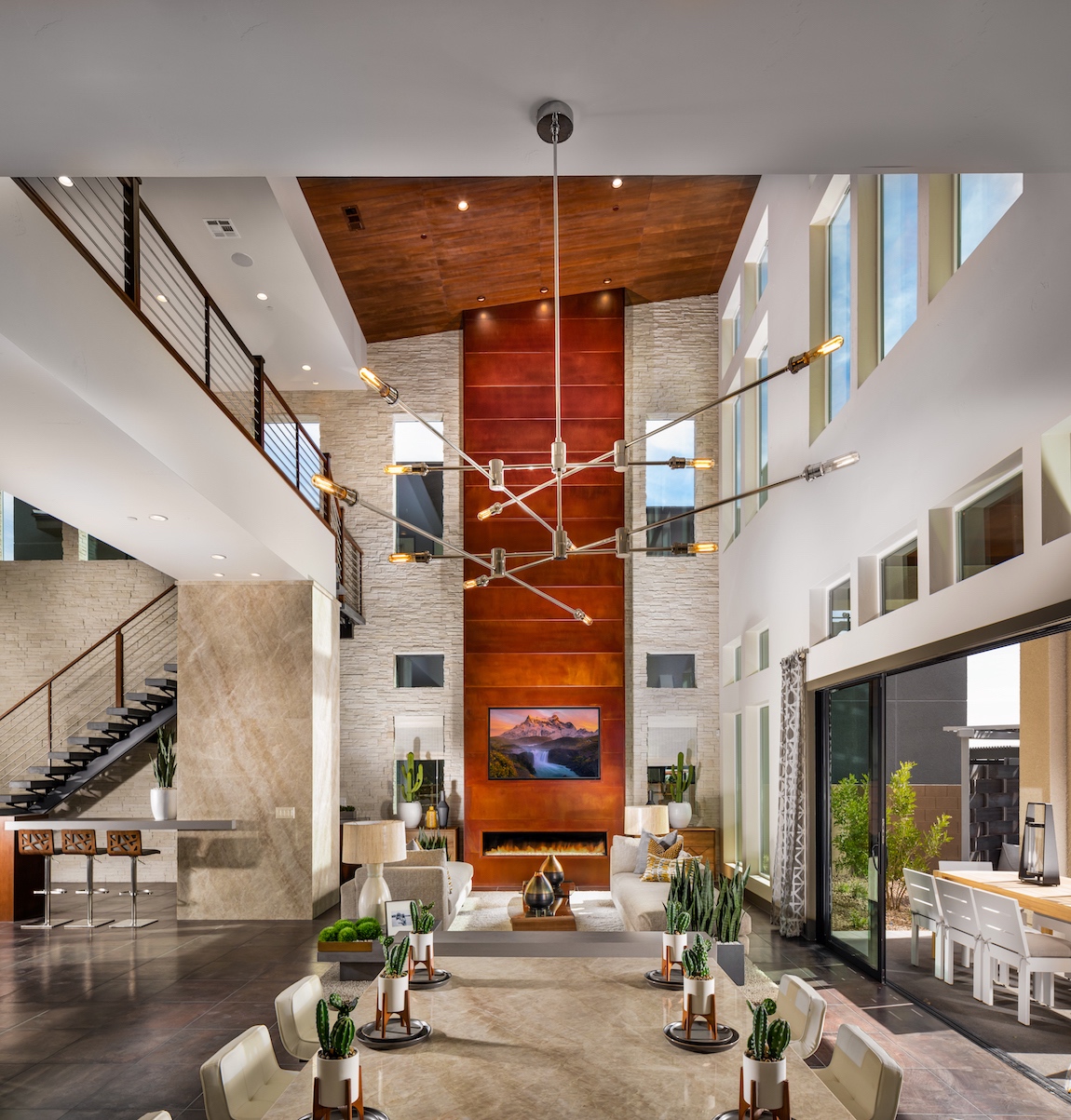Table Of Content
Among other furniture pieces, the dining table based on mid-century modern decor can bring the essence of the 1990s into the 20th Century dining room. The best part is that the material used for mid-century modern furniture is not confined to merely wood. Talking about upholstery, designers prefer retro designs with some fun geometric shapes, stripes, and fabrics like neutral wools.
How to incorporate mid-century modern style in your home
In this entryway by Paradowski Studio, a green-yellow tone has been painted over the walls, storage cabinets, and ceiling, allowing the dark wooden herringbone flooring to really pop. The finish here has been kept sleek with clean lines, but interest has been added to the ceiling with organic-shaped indents added to frame the lights. Decorilla emerged in 2010 when a group of passionate interior designers envisioned a platform to connect clients with top-notch design expertise. Since its inception, Decorilla has collaborated with thousands of professional designers who have transformed countless homes and commercial spaces worldwide. Every day, Decorilla’s designers craft bespoke interiors, allowing clients to experience spaces that resonate with their personal style and aspirations, fostering genuine connections with the world of design. Timber is certainly a main feature in mid-century modern decorations and furniture.
Mixture of Materials
gvlMOD Homes Tour puts mid-century modern in the spotlight - Greenville News
gvlMOD Homes Tour puts mid-century modern in the spotlight.
Posted: Wed, 20 Mar 2024 07:00:00 GMT [source]
Incorporating green through indoor plants is key to mid-century modern design. Besides plants adding life to a space, they purify the air and create a sense of calm. Check out these midcentury modern living room ideas in a range of sizes and settings for inspiration. The Mid-Century Modern designers quite often made use of whimsical combinations to lend an exotic element to their décor. Think out of the box and bring in some eccentric shaped furniture, abstract pattern upholstery to exude that esoteric feel.
Saarinen Round Dining Table
Gehry’s signature Deconstructivist style and spare palette works with the neutral tones, luxurious materials, and rounded contours. Take, for examples, the living room’s lush Mario Bellini mohair sofa (an icon of 1970s design), the handwoven Scandinavian wool rug balancing out the concrete floors, and the concrete fireplace counteracted with a warm woodgrain patterns. In the living room of the Goldwyn house, an iconic residence in Los Angeles that’s now the home of the Future Perfect gallery, a jewel-toned lounge is swathed in velvet and overseen by a handwoven rattan chandelier by artist Chris Wolston. Though this scheme deftly mixes eras, the clean lines throughout and the dark stained wood feels distinctly midcentury.
Art and design exhibitions
This placement will certainly create a cohesive and polished look in your home. The windows are meant to be kept large and open to let the fresh air waft inside without being encumbered by heavy drapery. If possible, a touch of green elements can be introduced indoors to accentuate he deign and opt for light wood and cotton textile to keep it floaty and airy. Do bring in surprises that aren’t from or devoted to the era yet do share a similar aesthetic and silhouette as they’ll help to make your home unique to you and give you more freedom. Blocks of color add visual interest to the glass-and-steel Eames House structures. "Understand that the case pieces were made decades ago and people's needs were different," Arditi comments.
Bring in Bold Patterns
Follow suit and go for extras like the oversized chair and multi-arm floor lamp to introduce flashes of playful silhouettes in any room in your home. For one, the sturdy Danish inspired dining table and matching chairs give off a strong vibe that compliments the rooms moody hues and slightly feminine curves. But best of all, we like that the overall appeal of the room marries the best of mid century modern home design with a playful sense of off-kilter quirk thanks to such an unexpected mix – that still feels totally connected. To create an up to date mid century modern kitchen that’s warm, inviting, full of personality, and practical, think of ways to add bright pops of color, small vintage appliances and decorative extras throughout. And lucky for you, there’s a slew of well-made appliances styled after retro kitchen gadgets available at a variety of prices. With natural elements and an emphasis on the outdoors being hallmarks of mid century modern design, take advantage of every window you have and let the light in.

What is midcentury-modern architecture?
A sense of openness and flow that is synonymous with mid-century modern design. “Mid-century modern design often includes open floor plans, creating a seamless flow between different areas of the home and allowing natural light to fill the space,” says Amanda Sims. This approach can not only enhances the overall aesthetic but also creates a more functional and versatile living environment. Geometric and abstract patterns are commonly found in mid-century modern interiors.

The first space you see when entering a home, an entryway should be a preview into the rest of your interiors, and create a welcoming atmosphere. At the same time, it's a hard-working area that sees a lot of footfall, so the space needs to be hardwearing as well as aesthetically pleasing – a sometimes difficult balance to achieve. A mid-century modern living room can be imagined in moody colors like orange or rust. Other rooms allow for more playful hues like sunny yellow, turquoise, and other primary colors. Designers ensure that they do not oversaturate any room and ground the vibrant hues with some neutrals.
Color palette
The rise of mid-century modern design can be traced back to a combination of factors. At the heart of this design movement was a desire for a fresh start in the aftermath of World War II. As people sought a break from the past, a new aesthetic that reflected the changing times began to take shape — and this interior design style eventually became knowsn as mid-century modern design. The influence of Mid-Century Modern design extends into contemporary life, evident in the ongoing popularity of its furniture and architectural principles. Its versatility allows it to blend seamlessly with other design styles, from bohemian to contemporary, making it a perennial favorite among designers and homeowners alike. The style’s principles of simplicity and functionality align with current trends toward minimalism and sustainable living, proving its enduring relevance in a rapidly changing world.
Teak is a specific wood species we see a lot of in mid-century modernism, though by all means it is not the only wood used, as rift-cut white oak is also quite common. Please note that the designs showcased within the story are subject to availability and will vary based on the year the homes were designed in. If you look at homes that feature the mid-century interior aesthetic, you’ll notice how furniture, like cabinets, might have different heights. Molly joined the Homes & Gardens interiors team at the start of 2024 as a content editor. Her undergraduate degree was in Magazine Journalism and Production, which she studied at the University of Gloucestershire. Before joining Homes & Gardens, she worked for two interiors titles across both print and digital channels, writing about a range of topics from room design ideas and decorating trends to the best places to source pre-loved homeware.
A large, geometric light fixture is the perfect main light source for a midcentury modern living room. Nina Garbiras drew attention to the industrial elements of this New York City loft with the ceiling light, then brought in contemporary furniture to complement it. A number of designers and architects who were active during this period created furniture pieces that have gone on to become modern classics, including chairs by Ray and Charles Eames and lights by Isamu Noguchi. Be mindful that mid-century modern interior design is adaptable to the needs and concerns of today’s homeowners.
Midcentury design embodies a minimalist ethos, focusing on the idea that less is more. Spaces are designed with a keen eye for proportion and scale, ensuring that each piece of furniture and decor not only serves a functional purpose but also contributes to the aesthetic unity of the room. This minimalistic approach fosters a sense of tranquility and openness, making Midcentury interiors timeless and appealing. The light green color of these living room walls by Ashley Maddox bring in the midcentury modern spirit.
On the Market: Gladwyne Mid-Century Modern House for Sale - Philadelphia magazine
On the Market: Gladwyne Mid-Century Modern House for Sale.
Posted: Thu, 08 Feb 2024 08:00:00 GMT [source]
Hence instead of cluttering up space with heavy, ornate stuff, the trick is to keep open spaces bordering on one central focal point which shall lay down the theme of that room. The term mid-century modern design was coined by Cara Greenberg in her 1984 collection. It refers to the design style between the 40s and the 60s which stretched the boundaries of engineering at that time. George Fred Keck, his brother Willam Keck, Henry P. Glass, Mies van der Rohe, and Edward Humrich created Mid-century modern residences in the Chicago area.
Today, it is a modern home, with an interior that nonetheless respects the bones of the building. In the living room, an elegant metal reading light hangs over a mid-century style chair and a cosy rug softens the room's hard surfaces and symmetrical lines. As the name suggests, mid-century modern is the name of a style of design and architecture from the middle of the 20th century, usually seen as spanning from the mid-1940s until the late 1960s.
The design’s characteristic geometric shapes and vibrant colors are echoed in modern graphic design, illustration, and sculpture, showcasing its versatility and enduring influence on creative expression. This crossover highlights the design’s ability to transcend mediums, reinforcing its status as a timeless and versatile aesthetic. Sims advises to "look for furniture and architectural elements like lighting with clean, sleek lines and organic shapes." Mid-century modern design places a significant emphasis on functionality and simplicity. Thus, the sofas, coffee tables, dining tables you choose should reflect these aesthetics and be as functional as they are beautiful. Furniture in a mid-century modern interior is usually simple with clean lines. At its core, a mid-century modern style juxtaposes organic shapes with sleek lines.
Using hidden storage solutions can help to keep the look of a mid-century modern interior design space clean. Ottomans, for example, can look chic and neat while holding warm blankets out of sight. It is of note here that the mid-century Modern style does not only refer to furniture or architecture but accessories and materials that were brought in use during that era. If you’re looking to mix styles and eras, this early Frank Gehry home is a study in harmonious contrast.
No comments:
Post a Comment